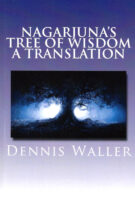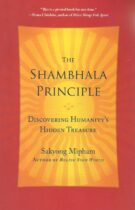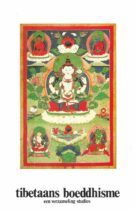Nagarjuna’s Tree of Wisdom – a Translation
Door Dennis Waller
101 Pagina’s | 2012 | Softcover | ISBN 9781481169028
The Tree of Wisdom van Nagarjuna is een verhandeling over moraal en ethiek die meer dan 2000 jaar geleden is geschreven. Dit commentaar op moreel leven lijkt sterk op andere teksten zoals de Tao Te Ching van Lao Tzu, de Shin Shin Ming van Seng Ts’an, de Enchiridion van Epictetus, en Meditaties door Marcus Aurelius. Het is opmerkelijk dat dit pas de tweede Engelse vertaling is van deze oude tekst van deze grote Indiase filosoof. De eerste vertaling naar het Engels werd gedaan door W.L. Campbell in 1918. Ten tijde van Campbell’s vertaling was er in de allegorieën al zoveel voor de geschiedenis verloren gegaan dat de betekenis niet voor alle verzen kon worden geëxtrapoleerd. Deze versie is geïnterpreteerd in een modernere hedendaagse stijl, maar bevat nog steeds de essentie van de boodschap die Nagarjuna naar voren bracht. Ik gebruik liever het woord interpretatie dan het woord vertaling, omdat dit meer een weergave is die is geconstrueerd om de betekenis zo te verduidelijken dat het gemakkelijk is om de concepten te begrijpen.
Karma – Oorzaak en gevolg in het Tibetaans boeddhisme
Door Dagpo Rinpoche, vertaling door Hans van den Bogaert.
128 Pagina’s | 2017, derde druk | Paperback | Milinda Uitgevers, Geraardsbergen | ISBN: 9789056700768.
Over het onderwerp ‘karma’ leven bij veel mensen in het Westen heel verschillende interpretaties. In dit boek geeft Dagpo Rinpoche, ten behoeve van degenen die zich hierin verder willen verdiepen, een uitgebreide presentatie van de verschillende aspecten en indelingen van het begrip karma vanuit de traditie van het Tibetaans boeddhisme. De historische Boeddha Shakyamuni heeft na het bereiken van verlichting 45 jaar lang zijn bevrijdingsleer onderwezen. Een belangrijk onderwerp was de verklaring van oorzaak en gevolg, het karma, dat hij onderwees als onderdeel van de vier Edele Waarheden, de kern van de boeddhistische leer.
Wanneer wij goed begrijpen hoe al onze ervaringen uit onze eigen activiteiten voortkomen, wordt het mogelijk bevrijding van negatieve ervaringen te bereiken door onze activiteiten bewust te sturen, zodat wij ten slotte, net als de Boeddha, verlichting kunnen ervaren.
Inzicht in de werking van karma, van oorzaak en gevolg, is buitengewoon belangrijk voor al diegenen die hun geest willen trainen op weg naar het geluk van bevrijding en boeddhaschap. Ook voor wie geen boeddhist is, maar er wel naar streeft een beter mens te worden, zullen de hier overzichtelijk gepresenteerde inzichten ertoe kunnen bijdragen het eigen handelen bewuster te sturen.
The Shambhala Principle – Discovering Humanity’s Hidden Treasure
By Sakyong Mipham.
206 Pages | 2013, first edition | Paperback | Harmony Books, New York | ISBN 9780770437459.
”Sakyong Mipham invites us all to dig deep into our hearts and bring forth the jewel that will illuminate our own inherent worthiness and that of society—as well as the worthiness of the beautiful earth we inhabit.”
– Pema Chödrön
We humans have come to a crossroads in our history—we can either destroy the world or create a good future. The Shambhala Principle offers the principle of basic goodness as a way of addressing the personal and social challenges that we face. Do we, as humans, have confidence in the basic goodness of humanity, as well as in society itself? As a Tibetan lama and spiritual leader, this strikes me as our most compelling global issue.
This book revolves around a dialogye with my father, the legendary Chögyam Trungpa. Whether his responses were direct or mystical, he continuously returned to the topics of basic goodness and enlightened society. Not only did he show me how I could become confident in their existence through awareness and meditation, he also taught me how basic goodness is a socially viable standard that could stabilize and transform our world.
However, this book is not a memoir, or even a message. It is an invitation to readers to reflect on their own basic goodness and the basic goodness of society, and then contemplate the question: Can we rouse our energy and confidence to create a good world that is founded on this principle? I encourage you to join me in this contemplation.
— Sakyong Mipham
Je Geest als Bondgenoot – Een weg naar innerlijke vrede en een open geest
Door Sakyong Mipham, vertaling door Meino Zeillemaker.
173 Pagina’s | 2015 | Paperback | Uitgeverij Juwelenschip, Utrecht | ISBN: 9789076681245.
Sakyong Mipham is de zoon van Chögyam Trungpa Rinpoche. Net als zijn vader is hij een ervaren en geliefd meditatiemeester. In dit boek maakt hij onder andere duidelijk dat je bij meditatie de geest niet hoeft te onderdrukken of tot zwijgen te dwingen. Daarmee neemt hij een groot struikelblok weg voor velen die meditatie willen beoefenen. Je kunt je geest juist zien als bondgenoot om transformatie te bereiken!
Lighting the Lamp – An Approach to the Tibetan Path
By Alfred Woll.
158 Pages | A Quest Original, first edition 1992 | Softcover | Quest Books, U.S.A. | ISBN: 0835606864.
Why should overcommitted Westerners make time in their schedules for meditation? In this down-to-earth book, Alfred Woll, a Westerner who himself benefited from the practice of Tibetan Buddhism, guides the reader in answering these questions:
- Why does the typical Western lifestyle of ‘consume-orientation’ lead more often to pervasive dissatisfaction than than to lasting happiness?
- How can the example of the Buddha’s life and teachings lead to an alternative focus on ‘self-evolvement’ and spiritual development?
- How can meditation, drawn from Tibetan practice, help Westerners?
Unlike many authors, Woll does not automatically assume that the reader accepts karma and reïncarnation; rather, he presents arguments to help readers make up their own minds. Easy to understand and yet rich in content, this book is ideal for those, who wish to learn more about Tibetan spiritual practice.
From Chapter 15: ‘Selflessness’ (p. 145):
” To stop the samsaric melodrama in which we exist once and for all, we need the realization of selflessness or, as this key Buddhist idea is also called: emptiness. We have seen that our disturbed mental attitudes, such as anger, jealousy, attachment, and so forth, take away our peace of mind. These attitudes are the real troublemakers in our lives. Though, we can certainly reduce the extent to which these negative mind states control our behavior by working on our personality and increasing our mindfullness, in order to eliminate them completely, we have to end our false way of seeing reality. “
Child Exodus from Tibet
By Birgit van de Wijer.
144 Pages | April 2006 | Softcover | Birgit van de Wijer, uitgever | ISBN 9078464011.
Tibetan parents send their children to school abroad in massive numbers . . . thousands never arrive: they die from freezing, starvation, exhaustion, hypothermia; they are caught by the Chinese or Nepalese police and sent back over the border. How desperate must a parent be to entrust their child to strangers to undertake a thousand kilometre journey in a strange convoy over the snowbound Himalayas? Since the Chinese occupation of independent Tibet in 1950, the country has slowly been choking in a stranglehold. In the early Eighties, dying Tibet began to send its children to India.
In this book Birgit van de Wijer for the first time illuminates this horror from all angles: why children flee, how many flee, their escape routes, the risks they run, their reception in Nepal and India, and the psychological consequences. Above all, the children tell their stories themselves. The book is based on interviews, that the author conducted on the spot at great risk. The book grew from the conviction of an author, who hopes that this exodus can finally be stopped.
Tibetaans Boeddhisme – Een Verzameling Studies
Redactie: Ir. H.E. Ch. Poortman, Dr. J.H. Dubbink en Drs. R. Engelse.
93 Pagina’s | Uitgegeven in 1975 | A4-formaat softcover incl. illustraties | Uitgeverij der Theosofische Vereniging in Nederland, Amsterdam | ISBN: 0906175038.05.
Deze publicatie ziet het licht tijdens de viering van het 100-jarig jubileum van de internationale Theosophical Society. Moge zij bijdragen tot een juist inzicht in de oorsprong en het doel van het theosofisch werk, geworteld als het is in bepaalde universele leringen van het Tibetaans Boeddhisme. En moge zij helpen bij de verspreiding van mededogen en broederschap tot geluk van alle wezens.
Deze uitgave bevat een verzameling studies van diverse auteurs over de volgende onderwerpen:
- De Dalai Lama en zijn boodschap
- De Dalai Lama als mens
- Tibetaanse mystiek
- Dharmacakra, het levensrad van het bestaan
- Het Tibetaanse Dodenboek van leven en sterven
- Het Pad van de Bodhisattva
- Tibetologie
- Brieven van De Meesters
- Erkenning van de esoterische school
- De Mahatma’s over Tibet
- Het Vajrayana (tantrisch) Boeddhisme
- De zeven menselijke beginselen.
Mystical Verses of a Mad Dalai Lama
By Glenn H. Mullin, Foreword by His Holiness The Dalai Lama.
270 Pages | First Quest Edition 1994 | Softcover | Quest Books, U.S.A. | ISBN: 0835607003.
The Tibetan tradition of mystical verse is brought stunningly to life by renowned translator Glenn Mullin through these spontaneous outpourings of the ecstasy of enlightenment. Step into the visionairy of the outspoken and unconventional Second Dalai Lama, who was ‘crazed’ by the wisdom of the nature of reality. Prefaced by a readable and comprehensive introduction to the life and times of this wise exponent of spiritual knowledge, these poems are shining, lyric illuminations of Buddhist life. Each is prefaced by a translator’s preamble.
From Chapter 11 – ‘A Prayer of Pure Aspirations’ (p. 193):
Part One: A Call to the Guru:
” Most kind root guru, who always rests
On a sun and moon above my head,
I, a humble disciple, call out to you
With emotion surging in the depths of my heart.
From wherever you may physically be in this world,
Send forth a mystical emanation to heed me.
Reveal your radiant countenance to me;
And may we never ever become parted. “
Shambhala – The Fascinating Truth behind the Myth of Shangri-La
By Victoria LePage.
309 Pages | First Quest Edition 1996 | Softcover | Quest Books, U.S.A. | ISBN: 083560750X.
‘Discover the Secrets of Shangri-la’.
Somewhere, beyond Tibet, lies a Paradise of Universal Wisdom and ineffable peace known as Shambhala. Called by some Shangri-la, this mythical kingdom of jewel lakes, wish-fulfilling trees, and speaking stones has fired the imagination of both actual explorers and travelers to the inner realms. This fascinating look behind the myth shows Shambhala to be a ‘real’ place, always accessible to the pure of heart.
From Chapter 14: ‘A Sign of the New Millenium’ (p. 268):
” As for its destiny, the Kalachakric texts say, that one day the reign of the King of Shambhala will extend over the whole earth, which will become like a garden; a new Wisdom age will dawn and humanity will make rapid spiritual progress. The enemies of Shambhala will be defeated and those barbarians, who invade its sacred territory will be destroyed; yet that destruction will be their salvation. For Shambhala’s high vibrations will purify them, and their Souls will become as pellucid as crystal, so that after death on the battlefield they will be reborn into a Pure Land or else liberated beyond any earthly paradise into Nirvana. “
The Opening of the Wisdom-Eye – And the History of the Advancement of Buddhadharma in Tibet
By His Holiness the XIVth Dalai Lama.
178 Pages | First Adyar edition, fourth reprint 2015| Paperback | The Theosophical Publishing House, Adyar ISBN: 9788170591245.
This important book by the Dalai Lama the gives an authentic account of the teachings of Tibetan Buddhism. It is hoped that its publication will contribute to a greater understanding of Tibetan culture. The main part of the book is preceded by a short account of the spread of Buddhism in Tibet, also written by His Holiness. The whole range of Buddhist teachings as practised in Tibet is expounded with great clarity, yet with brevity.
From page 12:
HOMMAGE TO SUPREME WISDOM PERFECTLY ANALYZING ALL DHARMAS
” According to Buddhist tradition, the present era is called the time for virtue (śila-kāla) being one of the divisions of the five-thousand year period during which it is said the teaching of the fourth Buddha to appear in this Aeon, will actually endure. The most important religious feature of this era lies in the observance of the moral precepts. “
Kundun – A Biography of the Family of the Dalai Lama
By Mary Craig.
391 Pages | First published in Great Britain, first paperback edition 1998 | Paperback | Counterpoint, Washington | ISBN: 1887178910.
Here is the story of Tibet as told by its remarkable first family – a story of reïncarnation, coronation, heartbreaking exile, and finally the tenacious efforts of a holy man to save a nation and its people.
From the Foreword:
” We Tibetans are resilient, patient and resourceful. Ours is just a cause. We continue to be confident that the truth will ultimately triumph and our land and people will once more be free. Would the Chinese consider the Tibetan question so sensitive if our cause was dead? Under difficult circumstances we have kept the Tibetan spirit and a sense of hope alive. However, it is clear that these efforts alone will not be sufficient to bring about a final positive solution. Therefore, I appeal to the readers of this book to support the Tibetan people, so that ultimately they may again live in peace and dignity.
– His Holiness the 14th Dalai Lama. “
From Chapter ‘Lord of the Lion Throne’, p. 68:
” He is supposed to be the temporary embodiment of a god . . . called upon to lead, comfort and improve sinful, sufferinf mankind, and to teach the way to release. It is throughout the same being who sits on the Lhasa throne in successive embodiments. The secret person, the spiritual reality of the Dalai Lama, is immutable and only his body changes, a perishable vessel employed to reach down to the lowly human level and to make the dazzling light of the truth he embodies accessible to our limited understanding. ”
– Giuseppe Tucci, To Lhasa and Beyond.
 Bezig met bijwerken…
Bezig met bijwerken…









